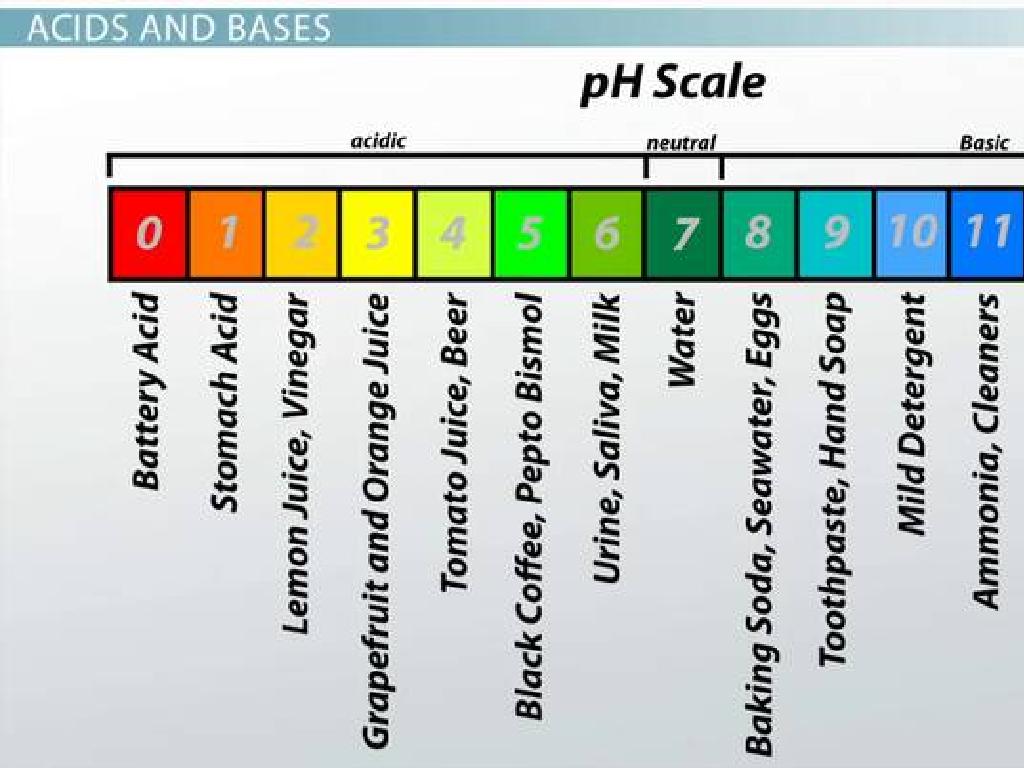Solve Multi-Step Inequalities
Subject: Math
Grade: Eighth grade
Topic: One-Variable Inequalities
Please LOG IN to download the presentation. Access is available to registered users only.
View More Content
Introduction to Multi-Step Inequalities
– Understanding basic inequalities
– Inequalities show the relationship between values.
– Recap of one-variable inequalities
– Review solving x + 3 > 5, subtract 3 from both sides.
– Transition to multi-step inequalities
– Introduce adding/subtracting and multiplying/dividing in one problem.
– Why multi-step inequalities matter
– They represent real-world problems like budgeting.
|
This slide introduces students to the concept of multi-step inequalities, building on their prior knowledge of one-variable inequalities. Start by explaining what inequalities are and how they represent the relationship between different values. Recap the basic steps for solving one-variable inequalities, such as isolating the variable on one side. Then, illustrate how multi-step inequalities involve more than one operation, requiring a combination of techniques. Emphasize the importance of understanding multi-step inequalities as they apply to real-world scenarios, such as calculating budgets or comparing quantities. Encourage students to think of situations where they might need to use inequalities in their daily lives.
Solving Multi-Step Inequalities
– Identify inequality sign and terms
– Look for ‘>’, ‘<', 'e', 'd' and list terms on both sides
– Use inverse operations on variable
– To isolate the variable, apply the opposite mathematical operation
– Maintain balance across the inequality
– Whatever operation you perform on one side, do the same to the other
– Check solution by substituting
– Plug the solution back into the original inequality to verify
|
This slide outlines the steps to solve multi-step inequalities, which is a key concept in 8th-grade math. Start by identifying the inequality sign and the terms on both sides of the inequality. Next, use inverse operations such as addition, subtraction, multiplication, or division to isolate the variable on one side. It’s crucial to maintain the balance of the inequality by performing the same operations on both sides. Lastly, always check your solution by substituting the variable back into the original inequality to ensure it makes the inequality true. Encourage students to practice these steps with various inequalities to build their problem-solving skills.
Solving Multi-Step Inequalities
– Walkthrough of a basic example
– Consider the inequality 3x + 4 > 10
– Explanation of each solution step
– Subtract 4 from both sides, then divide by 3
– When to flip the inequality sign
– Flip sign when multiplying/dividing by a negative
– Practice with negative coefficients
– Try solving -2x < 4 and discuss the steps
|
This slide aims to guide students through the process of solving multi-step inequalities. Start with a simple example like 3x + 4 > 10, and demonstrate each step: subtracting 4 from both sides to get 3x > 6, and then dividing by 3 to isolate x, resulting in x > 2. Emphasize the importance of maintaining balance by performing the same operation on both sides of the inequality. Highlight the critical rule of flipping the inequality sign whenever you multiply or divide by a negative number, as this is a common area of confusion. Provide an example with a negative coefficient, such as -2x -2 after dividing by -2. Encourage students to practice with additional problems for homework.
Example 2: Complex Multi-Step Inequalities
– Solve a challenging inequality
– Example: 3(2x – 4) > 6 + x. Let’s find x!
– Discuss common solving mistakes
– Mixing up inequality signs when dividing by a negative
– Strategies to avoid errors
– Double-check work; remember the rules for inequalities
– Encourage questions and clarifications
– No question is too small; understanding is key
|
This slide aims to tackle a more complex multi-step inequality to challenge students and deepen their understanding. Start by presenting a problem that requires multiple steps to solve, such as distributing, combining like terms, and isolating the variable. Highlight common mistakes, such as forgetting to flip the inequality sign when multiplying or dividing by a negative number. Offer strategies to help students avoid these errors, like double-checking each step and writing down the rules for inequalities. Finally, foster an environment where students feel comfortable asking questions and seeking clarification to ensure they fully grasp the concepts.
Practice Problems: Multi-Step Inequalities
– Solve given inequalities individually
– Pair up for collaborative problem-solving
– Work together to find solutions and compare methods
– Share and discuss various solutions
– Present your answers and explain your process
– Reflect on different solving strategies
– Understand there are multiple ways to reach the correct answer
|
This slide is designed to engage students in active practice of solving multi-step inequalities. Begin with individual work to allow students to apply their knowledge independently. Then, have them pair up to encourage collaborative learning and peer teaching, which can reveal new perspectives and methods. Afterward, create a platform for students to share their solutions with the class, fostering a discussion on the various approaches taken. This will help students see the diversity of problem-solving strategies and understand that different methods can lead to the same solution. Encourage students to reflect on the benefits of collaboration and the importance of understanding multiple approaches to problem-solving in mathematics.
Class Activity: Inequality Race
– Divide class into competitive teams
– Each team tackles inequality problems
– First team with correct solutions wins
– Points awarded for each correct answer
|
This activity is designed to encourage collaboration and to reinforce the concept of solving multi-step inequalities. Before starting, ensure that each team understands the rules and the process of solving inequalities. Provide each team with a set of inequalities that vary in difficulty to ensure that all students are challenged. Monitor the teams as they work, offering guidance but allowing them to think critically and solve the problems independently. The first team to present correct solutions for all their assigned problems earns a point for each. This competitive element will motivate students to work efficiently and accurately. After the activity, review the solutions as a class to reinforce learning and address any common mistakes. Possible variations of the activity could include a relay race format, timed challenges, or a ‘solve and pass’ approach where teams solve one step of an inequality before passing it to the next team.
Homework: Mastering Multi-Step Inequalities
– Complete the assigned worksheet
– Worksheet focuses on solving multi-step inequalities
– Practice multi-step inequalities at home
– Reinforce today’s lesson and build proficiency
– Utilize available resources for help
– Check the textbook, online videos, and math platforms
– Review and prepare questions for class
– Reflect on your practice and note any difficulties
|
The homework assignment is a critical part of reinforcing the concepts learned in class about multi-step inequalities. The worksheet provided should cover a range of problems, from basic to more complex, ensuring that students can apply the steps independently. Encourage students to establish a regular practice routine at home to enhance their skills. Remind them to use their textbook, educational websites, and any other resources provided during the lesson for additional support. It’s also beneficial for students to review their work and come to the next class with questions or topics they found challenging. This proactive approach will help them gain a deeper understanding and confidence in solving multi-step inequalities.
Conclusion: Mastering Multi-Step Inequalities
– Summarize key solving steps
– Combine like terms, isolate variable, and use inverse operations
– Emphasize importance of practice
– Regular practice solidifies understanding and skill proficiency
– Preview next lesson: Graphing
– Understanding inequalities prepares for graphing on number lines
– Encourage questions and review
|
As we wrap up today’s lesson on solving multi-step inequalities, it’s crucial to reiterate the steps involved in the process. Start by combining like terms, then isolate the variable, and apply inverse operations to solve the inequality. Emphasize to students that consistent practice is key to becoming proficient in these skills. Looking ahead, inform them that the next lesson will build on their knowledge by introducing graphing inequalities on number lines. This will help them visualize solutions and understand the range of possible answers. Encourage students to ask questions and review today’s material to ensure a solid grasp of the concepts before moving forward.





